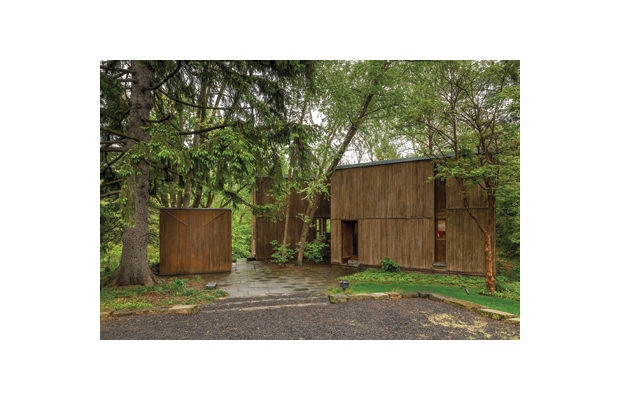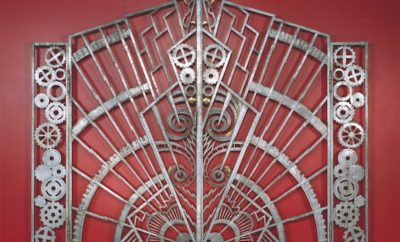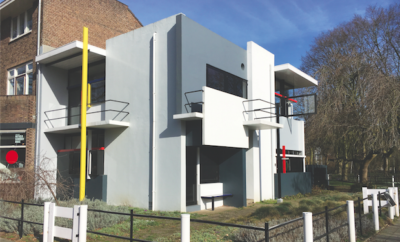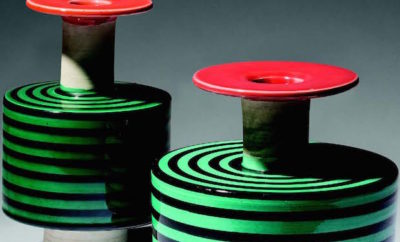
Design
Louis Kahn’s Little Known Jewel

A classic modern house by Louis Kahn.
Hatboro, Pennsylvania, is not a place where one would expect to find a modernist house, dominated as it is by colonial style buildings. Yet it was here that Norman Fisher, a family doctor, and his wife, Doris, chose to raise their two daughters, Nina and Claudia, in a house designed for them by the great Louis I. Kahn, who was by then on his way to becoming one of the most important architects of the twentieth century. They found a site on Mill Road, one of Hatboro’s prettiest streets, and hired Kahn in 1961. Over the course of the following seven years the Fishers and their architect developed a spirited relationship in which they engaged in lively conversations about the house’s design, often over late night dinners penciled in between Kahn’s frequent travels. (He was busy at the time with promising new commissions like the Salk Institute of Biological Studies, the Kimbell Art Museum, and the capital complex for Bangladesh—projects now considered masterpieces.)
There were times when Kahn tested his clients’ patience. Doris Fisher, in particular, would get frustrated whenever she asked him to make a change, because rather then modify the plans he would start over again. He ultimately produced five different schemes for the house over four years, which in part accounts for why it took so long to design and build. But another explanation for the long gestation was offered by William Whitaker, the collections manager of the architectural archives at the University of Pennsylvania, who attributed it to “a desire on the part of the architect and clients to attain a high degree of refinement,” as evidenced in “the cabinet-like quality of its construction and taut planning.” In other words, it took time to get it right.
That time seems to have been well spent given the elegantly spare structure that contains only what one needs while enveloping its inhabitants in light. Comprised of two wood cubes set atop stone bases, the Fisher house stands on an acre-and-a-half wooded site with a stream in the backyard. It is notable for its bi-nuclear plan, in which the living quarters are housed in the two separate volumes—one containing the living room, dining room, and kitchen and the other the bedrooms and bathrooms—and for the blending of contemporary design and classical sensibilities, something Kahn was experimenting with at the time.
Kahn drew inspiration for the design from his travels and the people and architecture he encountered along the way. Having just returned from Europe, for example, he looked to the Roman ruins and classical architecture he’d seen there for his proportions, as well as to the houses of Jorn Utzon (whom he met in Switzerland), which he described as having “great modesty…a simple roof and an interior made in a frugal way.” He likewise found inspiration in the Nantucket saltbox house, which he called “fundamental” and “an architecture of just settlement without any sense of ostentation or prestige.”
The Fishers too had ideas for the house that would come to influence the design. The vertical siding and rough interior plaster walls are said to reflect their love of the American farmhouse and barns. And the large picture window in the dining room, one of the house’s great moments, is of their design. Kahn originally designed that space without a window, saying that there were areas within every house where one should be at repose and he thought this was one of them. In the end, the house reflects a rich mix of ideas that express what Richard Saul Wurman, who at one point was an architect in Kahn’s office, has referred to as “a refined primitivism.”
The Fishers had great interest in the design trends of the day, especially the work of Isamu Noguchi and George Nakashima. But to them this was not just a house with a pedigree, it was also the perfect place to raise a family. Nina Fisher, who grew up there, describes it as “comfortable and fundamental. Not a fussy house.” She recalls that its unusual plan and the fact that some of the windows were actually just openings covered with shutters were sources for play. “We could hang a rope to exit the house and spy on our parents,” she says.
For the more than forty years they lived there, the Fishers dutifully tended the house like docents, cheerfully opening it up to visiting scholars and architects and furnishing it as a curator would, carefully and with great forethought. Norman Fisher went to great lengths to get the right stain for the exterior cypress siding. Nina Fisher says her mother would find “placeholders” to serve as temporary furniture until she found just the right pieces; she eventually assembled an eclectic collection that included quintessential mid-century objects such as a dining table, bedroom set, and stool by Nakashima (whose studio in nearby New Hope was a frequent family pilgrimage), a Jens Risom sideboard, and an Eames rocking chair, as well as rustic pieces inspired by nature.
For those like me who studied architecture at the University of Pennsylvania, Kahn was king. He ruled the roost of the hallowed halls of Penn’s architecture school, where he taught for many years and where his archive is housed, a collection of 6,363 drawings, 100 models, and 150 linear feet of files and correspondence that is a treasure trove for scholars and collectors. As a graduate student, I got to know Kahn’s buildings in the course of preparing for an exhibition on his work. But it wasn’t until my recent visit to the Fisher house that I finally got it—that I understood why he occupies such rare air in the annals of architecture and ranks with Frank Lloyd Wright, Le Corbusier, and Mies van der Rohe as among the great modernist architects of the twentieth century. At the Fisher house, Kahn transformed the most humble materials into a work of great beauty, producing, in the end, a building that has a far more commanding presence than its modest size suggests.












